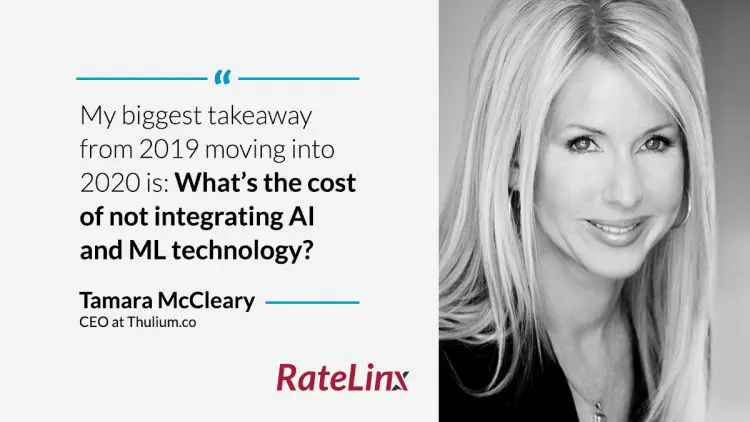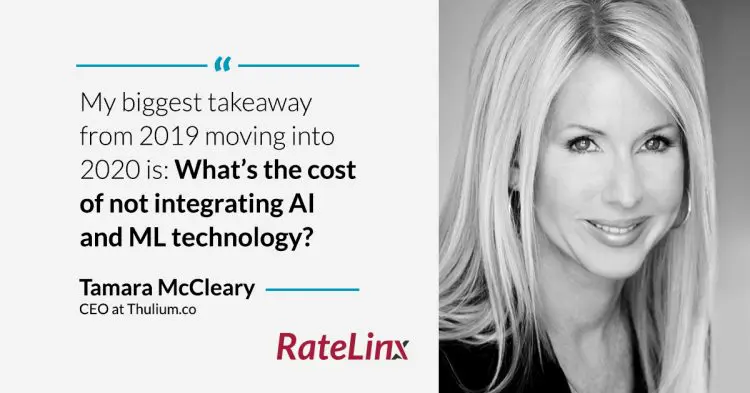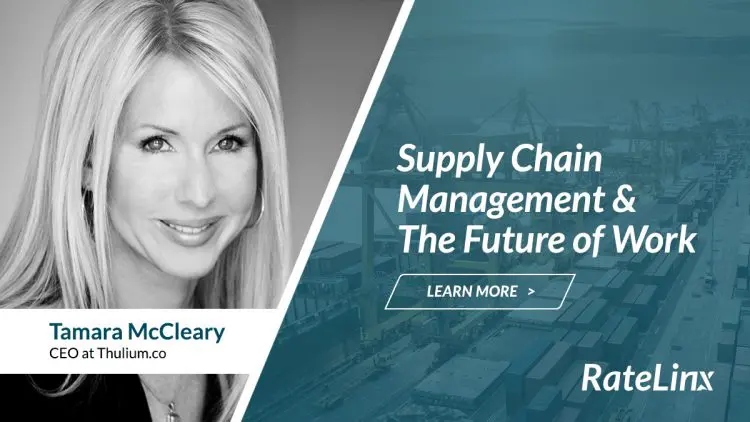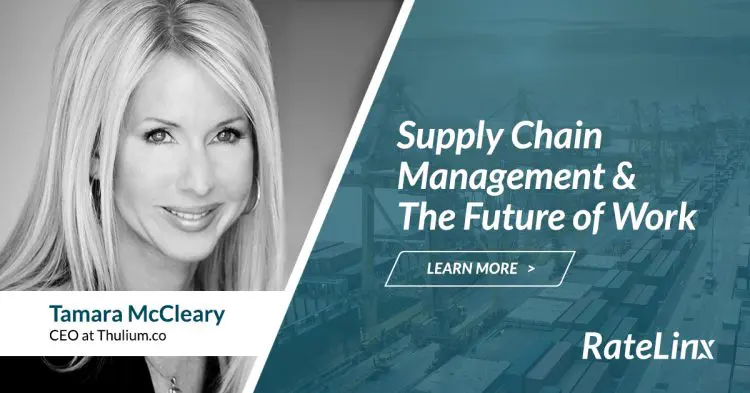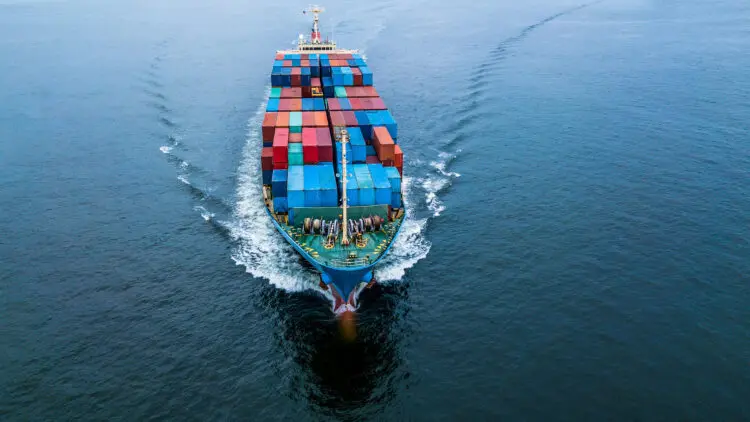One of the most significant forces driving businesses to evolve is ever-escalating customer expectations.
“Every sector of every industry is facing the same pressures,” says Tamara McCleary, Futurist, and CEO at Thulium. “Digital transformation, disruption, and globalization have changed what customers demand from us, and that’s changing how we do business.”
Supply chain management leaders aren’t immune to these pressures — a supply chain issue can affect the customer experience. Supply chain managers aren’t in the front office. However, what they do ripples up and down the organization.
Just how fundamentally are customer expectations changing the supply chain? By the end of 2020, 50% of all manufacturing supply chains will have the capability, either in-house or outsourced, to enable direct-to-consumption shipments and home delivery. That’s a massive reconfiguration.
So you must get the next few years — even the next few months — right. How you invest, who you hire, what skills you nurture: All of it will determine your success in the future.
Featured Expert

Tamara McCleary
Tamara is a consultant focused on training businesses to prepare for digital transformation and the future of work, with a focus on human-machine partnerships, AI, robotics, IoT and blockchain. She also hosts the Tech Unknown podcast for SAP.
To help you develop your roadmap, we asked Tamara for a glimpse into the future of supply chain management. Here’s what she had to say.
How to Evolve Your Supply Chain in the Next Five Years
Remember when 2020 was an impossibly long time in the future? Now it’s just a few months away. The future is upon us, and those who adapt quickly will lead the next generation of digital supply chain management.
The Year 2020: AI and Machine Learning
For 2020, Tamara says it’s “go time” for artificial intelligence (AI). “If you’re not harnessing AI by the end of the year, it’ll be almost impossible to catch up, let alone gain momentum,” she says.
For example, there is a wide variety of use cases for AI in supply chain and spend management. “From identifying new markets and tracking exchange rate volatility, to managing risks and identifying the best suppliers, AI can help us elevate spend management,” Tamara says. “It can also help us leverage big data to streamline processes and improve decision-making.”
“The largest cog in the wheel isn’t really the systems or the data. It’s the PEOPLE.”
Furthermore, the potential visibility into the supply chain is priceless. Tamara says: “It’s all about advanced strategic reasoning and strategic sourcing. When spend analysis is unlocked with AI, organizations can understand the total cost of doing business with each supplier. My biggest takeaway from 2019 moving into 2020 is, “‘What’s the cost of not integrating AI and ML technology?’”
While that may have been a rhetorical question, here’s at least one answer: Businesses who optimize their supply chain with AI, machine learning and other tech have 15% lower supply chain costs. This is less than 50% of the inventory holdings, and cash-to-cash cycles at least three times faster than those not focused on supply chain optimization.
The Next Five Years: 5G, Blockchain, RPA and More
According to Zurich Insider, 63% of companies (almost two-thirds!) have no technology stack to monitor supply chain performance. That means if you implement even a minimal solution, you’re in the top 1/3rd. But don’t stop there.
To start with, Tamara suggests keeping a close eye on 5G technology in supply chain management. “For your five-year plan, don’t underestimate the impact of 5G. It’s going to greatly increase the feasibility of using technologies such as augmented reality (AR) and virtual reality (VR) in the supply chain. 5G’s faster speed and reduced latency will lower the overhead of using these technologies to get unprecedented visibility and transparency,” she says.
AR, VR, and IoT will increase visibility, as well as secure transaction tech like blockchain. Tamara says, “Blockchain technology will also enable greater visibility and authentication across the supply chain, powering more accurate tracking, increased efficiency, and decreased counterfeiting,” Tamara says.
“The greatest challenge for supply chain leaders is having a handle on data that is housed outside of the enterprise.”
As a result, your workforce will evolve in the next five years as robotics and automation take over manual tasks. Tamara suggests keeping an eye on Robotic Process Automation (RPA). “This tech will prove its ROI in the next five years by increasing efficiency, decreasing costs, and mitigating errors,” she says. “Everything autonomous will also factor in the changes we see over the next five years. Think about robots, drones, autonomous vehicles, and more.”
But don’t think of these as individual, isolated solutions, Tamara says. “All of these technologies are not mutually exclusive. As a technological amalgamation, they will drive the biggest changes and disruptions in the supply chain over the next half a decade.”
Beyond Technology: The People & Process Transformation
As you evaluate technology for your five-year plan, keep in mind that technology doesn’t exist in a vacuum. However, the businesses that will have the most success adapting aren’t necessarily the ones with the biggest tech budget.
Says Tamara, “The largest cog in the wheel isn’t the systems or the data. It’s the PEOPLE. It’s human nature to divide ourselves by skill sets and specialized teams or work units to streamline work processes. Having these split departments and business units is a normal function for an organization to be effective. However, when units are compartmentalized, the flow of information is compromised, creating errors and inefficiencies.”
You may also be interested in…
What Every Supply Chain Pro Needs to Know About Visibility
Visibility is supposed to answer the question, “Where’s my freight?” but does it? We outline three truths of visibility you need to know.
Tamara provided five key questions that can determine whether you have a healthy culture for adaptation and collaboration:
- Does your organization have a culture of transparency?
- Do you have cross-functional initiatives?
- Are you an advocate for digital inclusion internally?
- Do you evaluate vendors for how they will facilitate communication throughout the organization?
That last question is a big one. “Ensure your vendors are aware that your organization is trying to break down silos. Look to see if your organization’s legacy systems are making your silo problem worse, and make sure you’re evaluating new tech with collaboration and communication in mind,” Tamara says.
Particularly, creating that culture of transparency should be a central part of how you hire new talent. “Given the trends and explosive growth curve supply chain leaders must navigate, finding the strongest skill sets are critical. Look for adaptability, the ability to see the big picture, excellent problem-solving skills, and flexibility and resilience that lends itself to fostering a growth mindset,” Tamara says. Look for candidates who are knowledgeable and willing to invest in ongoing learning and sharing knowledge across the organization.
How Can Leaders Prepare for the Future of Supply Chain Management?
The future industry standard for all businesses is going to be real-time decision making. That means it’s mission-critical to have high visibility into a digitally connected, end-to-end supply chain, including visibility from manufacturers, partners, and suppliers to retailers, customers, and beyond.
Says Tamara, “The greatest challenge for supply chain leaders is having a handle on data housed outside of the enterprise — such as retailers, supply partners, etc. — each with its own IT infrastructure. Data outside of the supply chain leader’s control is what keeps us up at night! Harnessing technologies such as the IoT, cloud, predictive analytics, etc. will serve to assist in bridging the data gap.”
Start Now to Stay Ahead of the Competition
If you want to stay ahead of the curve, don’t wait until five years from now; don’t even wait for the end of Q4. Tamara advises, “Begin by strategically implementing and integrating any new technologies you’ve acquired, but aren’t being used to their full potential. If those new technologies are not in place, begin investing in them.”
Most importantly, invest in the people who will help develop the culture that will make this technology work the way it’s intended to. Without these crucial components, tech is just tech.
For more leaders in supply chain management, check out the 15 Supply Chain & Logistics Experts to Get (and stay ahead) of the Curve.
